Samantha Pleet’s iconic Harvest print.
Hello everyone!
Here I am again, writing about things that I love. I love Samantha Pleet’s Harvest print.
I became obsessed with this print when I was teaching a lot online in the Spring of 2021. At first I just had the Harvest scarf and would wrap it around my neck for class, most always with a virtual Helen Frankenthaler painting behind me (more on that another time maybe).
Then, on one random day, while someone was talking from their square, I unraveled it from my neck and spread it out over my keyboard. I became mesmerized by it. My love of it then became next level.
When I first purchased the scarf I got it because something about it tickled me and reminded me of the past. More specifically, my fashion past. It very clearly seemed then like an echo of the fruit prints from the 90s that were often on my dresses and shirts. I’m sorry as there may be a technical term for this style, but I just think of them as almost photographic portrayals of fruit and flower abundance (and sometimes animals). In my mind I can clearly see a shirt I used to wear in 1997, but I don’t know where it is anymore.
Dolls Kill 90s fruit print shorts that can be found here.
My 90s fruit prints didn’t look exactly like this print above (and I believe this is actually a recent-ish print) but there is a deep and fundamental similarity there. It’s that feeling in the print almost as if it’s an advertisement in the produce section of the supermarket (and maybe this is where the inspiration comes from?).
In a print like this, the overwhelming repetition of the fruit looks almost photocopied. Like maybe the designer hit cut and paste over and over. Or maybe it’s incantatory like any good love poem, repeating over and over again it’s confessions of loving devotion.
There’s a kind of humor to it, too. It reminds me of the Jeff Mangum line: “soft silly music is meaningful magical.” An everyday group of fruits repeated can have a sweet and silly charm.
A 90s abundance of fruit pattern that can be found here.
This 90s windbreaker print above has the essence of this style, except it’s not photographic looking at all and has a more drawn-on feel. And yet, there is something of this spilling over of abundance that feels the same.
Nylon Shoulder Bag in Lantana by Baggu found here.
Fanny Pack in Daisy by Baggu found here.
Maybe the style I am thinking of is a bit like these gorgeous prints from Baggu. They exalt a photographic portrayal of everyday flowers. There’s something 90s and also 70s about that fashion instinct (which is maybe the same instinct).
Or maybe the Harvest print makes me think of a button up and shorts set I had in the 80s as a little girl. I can barely remember it but I remember wearing it a lot. It had a white background and then had fruit kind of drawn on it. It wasn’t realistic looking and it was very upbeat. Just brightly colored fruit in the white hot light of noon. A lemon and maybe some grapes. I remember red fruit, too. Perhaps they were cherries. Or no, maybe strawberries. I think there were pineapples, too. Whole pineapples with expressively drawn-on tops.
When I first fell in love with the Harvest print it reminded me of all of these things and more. The print is about abundance obviously. And the idea of harvest—the time when everything comes to fruition. The moment when all of your great ideas are meant to be plucked from the ready vine. The cornucopia as I learned about it in Latin class. The fresh fruits and flowers not an abundance of what really is, but of what could be. The idea of abundance as an idea of the future. Like what creativity promises.
But it was that one day, with the Harvest print scarf strewn across my keyboard, that I really saw it for the first time. I thought: no, this print is painterly. I thought: this print is more a painting. And then I realized that of course it was a still life and that this was obvious all along.
The beautiful thing about still lifes is that they contain the abundance of life. They remind us that all abundance contains the reminder of mortality.
These ideas are almost like one of my favorite William Blake poems, “The Sick Rose”:
O Rose thou art sick.
The invisible worm,
That flies in the night
In the howling storm:
Has found out thy bed
Of crimson joy:
And his dark secret love
Does thy life destroy.
In this poem, the Rose is not fully in bloom. Its vow of blooming, its “crimson joy,” incites the “dark secret love” of the “invisible worm.” Its blooming somehow makes it sick and gives a reminder of its destruction. Destruction from the hand of that invisible worm flying through the night like a witch.
“A Vase with Flowers” (1613) by Jacob Vosmaer.
Blake’s poem is a kind of mini-still life, and still lifes in general always have this memory of mortality. For example, in the 17th century Vosmaer painting above we can appreciate the luxurious weight of the flowers by the way they are falling over the side of the vase, past the point of bloom. There is a heaviness to the senses and we ourselves feel weary alongside these slightly rotting flowers. Their petals lowered to the ground by gravity almost in mourning.
Here is “Still Life with Fruit on a Stone Ledge” by Caravaggio, 1603.
This is even more evident in “Still Life with Fruit on a Stone Ledge” by Caravaggio above. The rotting of the fruit has started and the overripening process is now more than underway.
Something feels horrific as the fruit in the painting a day ago must have been so ripe and so sweet. It’s a bit like William Carlos Williams’ famous plums in “This Is Just To Say”:
I have eaten
the plums
that were in
the icebox
and which
you were probably
saving
for breakfast
Forgive me
they were delicious
so sweet
and so cold
The plums that Williams could not keep himself from eating were once kept in the icebox to maintain their freshness—their peak of life. Now they are eaten full with animalistic desire, with their plum flesh “so sweet/ and so cold.”
That’s the tragedy of the beauty of the fruit in a still life: You can taste it. The immortal fruit is already turned and just still at a point where the sweetness of life resounds.
My well-loved Samantha Pleet’s magnificent Butterfly silk scarf.
Many of Samantha Pleet’s gorgeous prints do this. They have this still life logic and essence. They have this kind of dark reminder. Like in her glorious butterfly print (seen above), there is a spider.
It’s not that that spider is (necessarily) a symbol of death. Quite the contrary, maybe. But it still contains this possibility of it.
In Pleet’s Harvest print, it’s the blue that kills me. Those blue leaves have a knowledge that I want to have. That’s the spider in the print for me. It’s the mystical spider that knows everything.
A line from my in-progress novel which describes the dinner in a wedding scene.
For the past few years, I have been writing a creepy novel. I hope to share parts here in the future. In what used to be the first chapter, there is a wedding scene. The wedding itself is doomed. But in an earlier draft, you aren’t supposed to exactly know this at this point. It’s supposed to slowly burn into what the narrative is.
After the ceremony is over and the wedding goers sit down for dinner, there is a part where I describe the food. This description is in homage to the Harvest print. Not exactly in an ekphrastic way. But deeply inspired. It’s supposed to give itself away if you are paying close attention to it.
Whatever the case, there is a sense of abundance in the scene, I hope. A wedding, a good day. Even though the love might not be a forever love. The spider is somewhere, forever haunting the scene, with its reminder that any promise of good and magic is still worth it.
Maybe that’s what the Harvest print is to me. The blue leaves are there and otherworldly. But the realness of the fruits and flowers are so very real. And they remind me that living is everything. That it’s all worth each good moment you get.
Here I am in a Samantha Pleet Harvest print Demeter dress on a happy afternoon in Western Massachusetts last fall.
There are many gorgeous ways to wear the Harvest print on Samantha Pleet’s website here. There are gloves and dresses and scarves. I even have some long socks doused in these Harvest fruits (which I take out sometimes just to look at).
I can attest that if your mood is a little sour, or just downright hopeless, that the Harvest print will be a source of comfort and joy. That it can be paired with any other print or color tone and still look divine. And that something of it reminds—as if we needed a reminder—that sorrow with its blue leaves is part of everything. That all of the beautiful fruit of life can be part of our everyday offerings. That fruit and flowers can hold us still with their sweet embraces.
Long live every harvest!
Love & Roses,
Dorothea

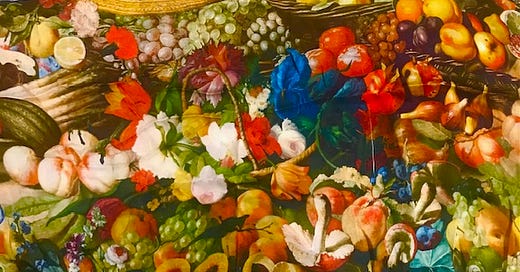



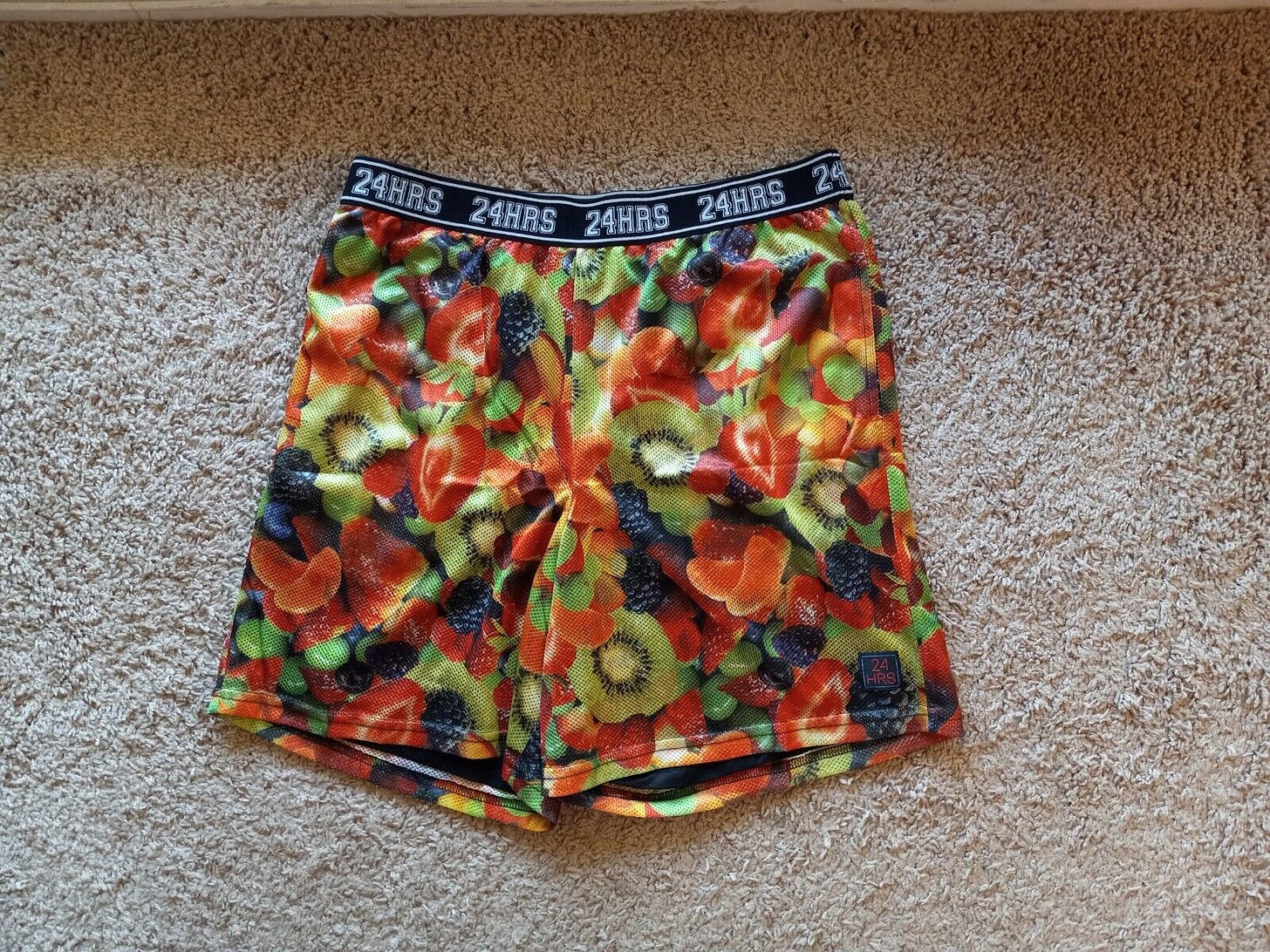
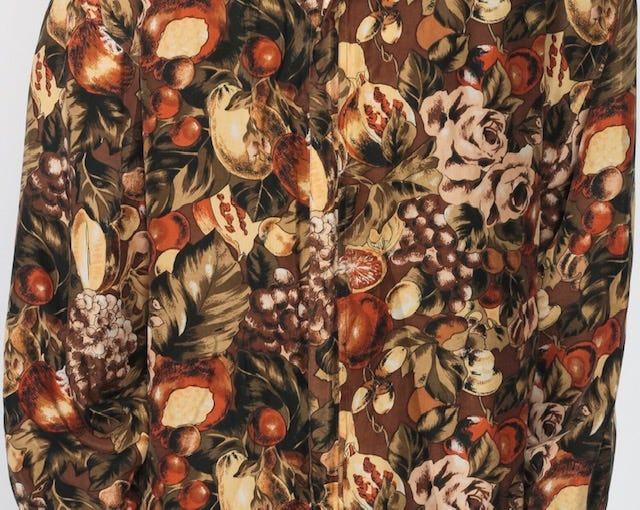
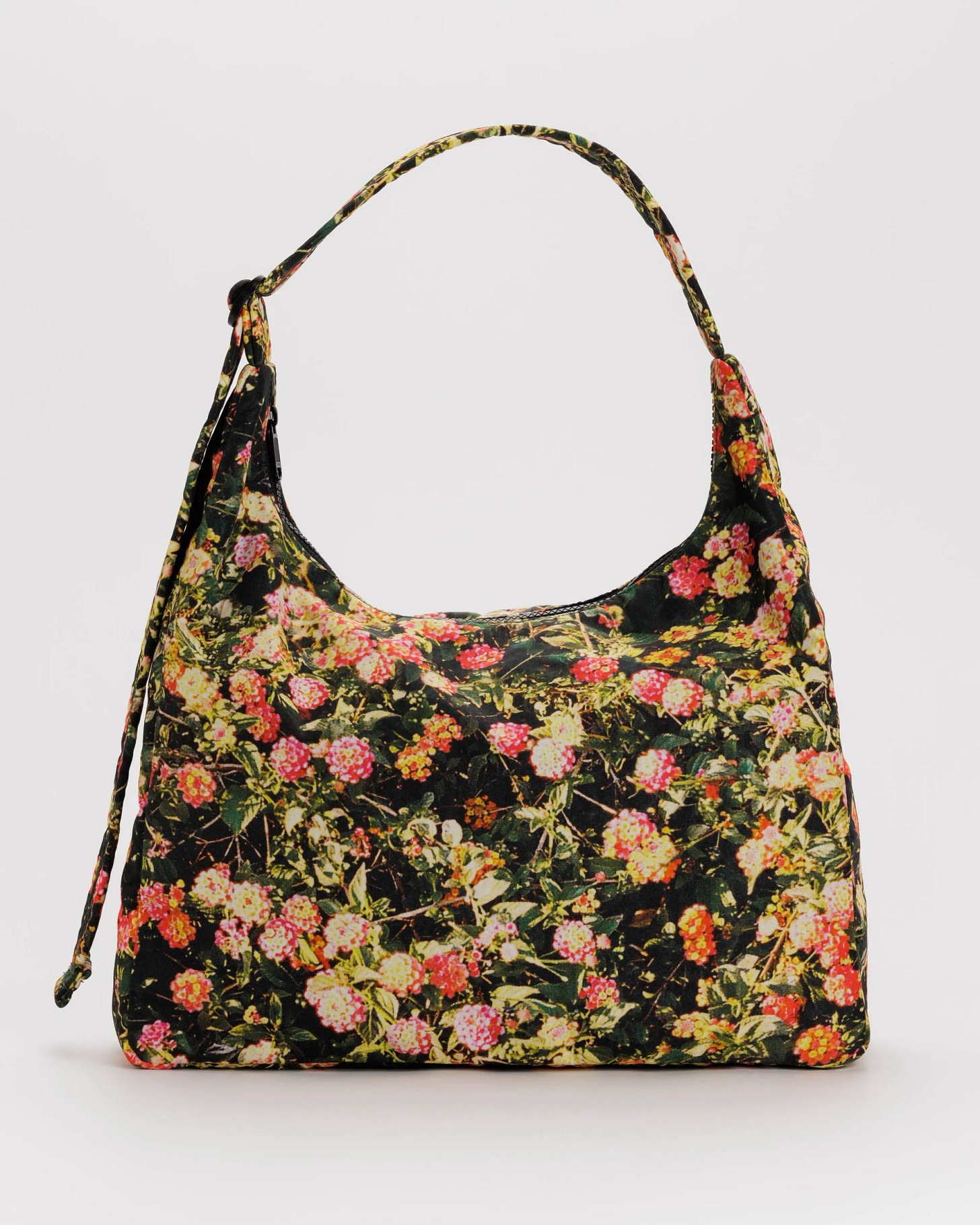
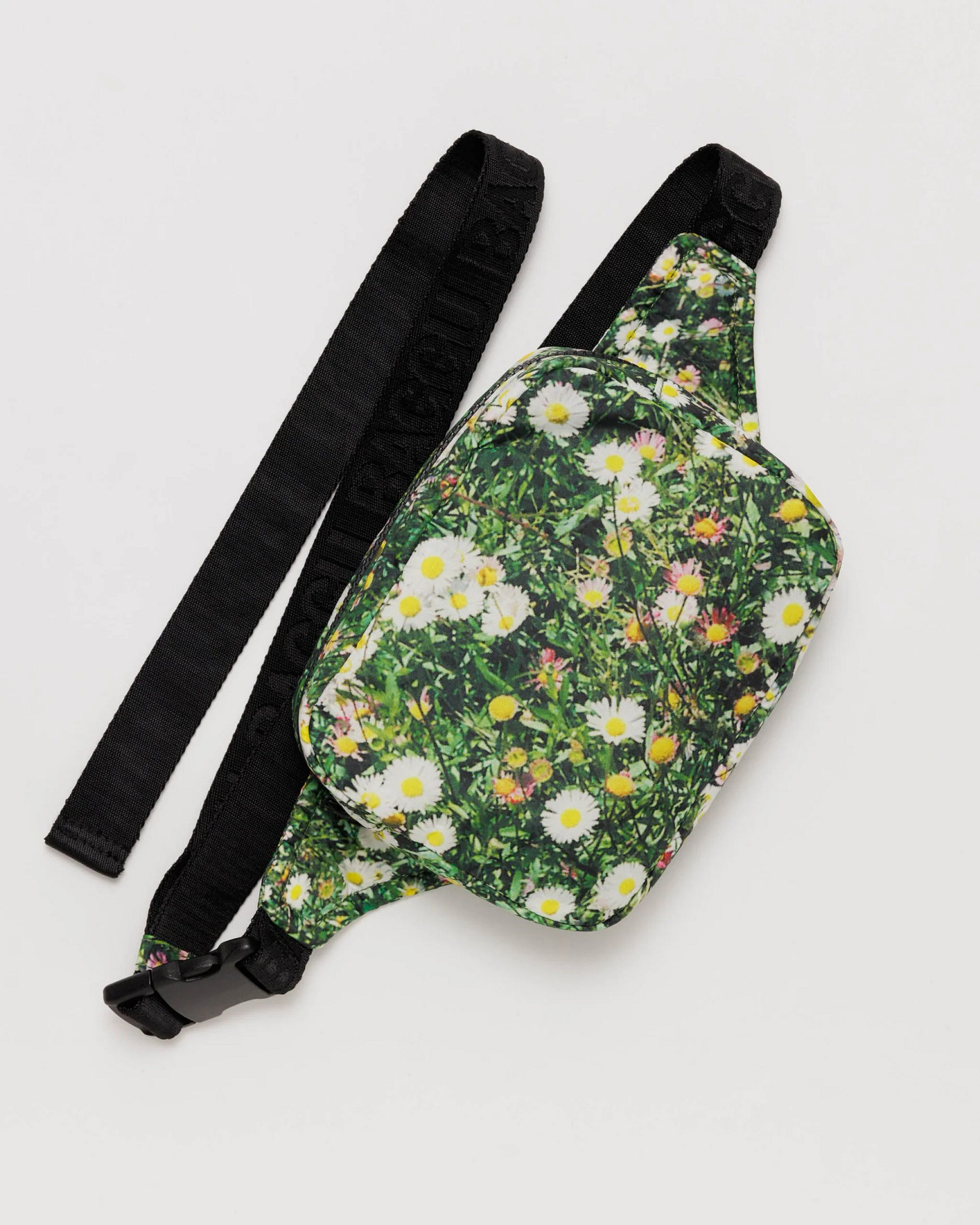
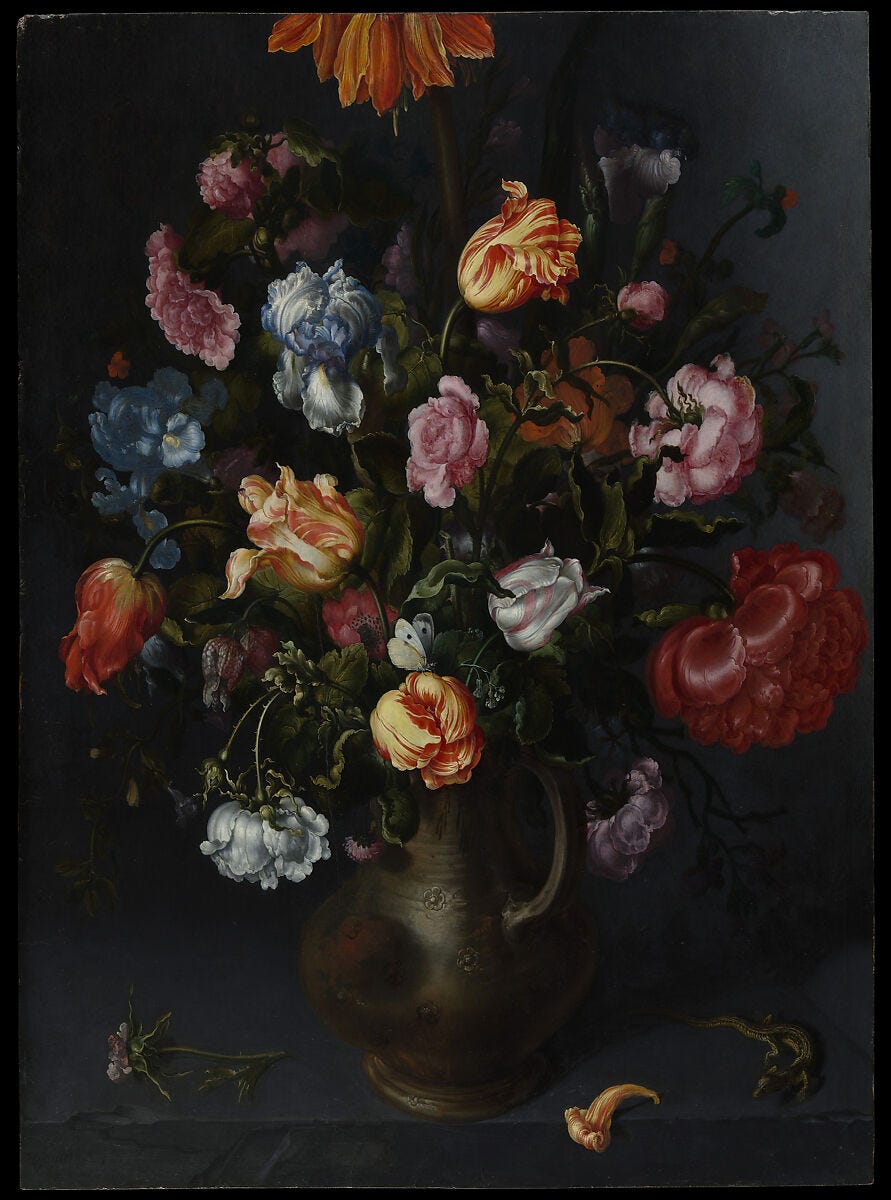
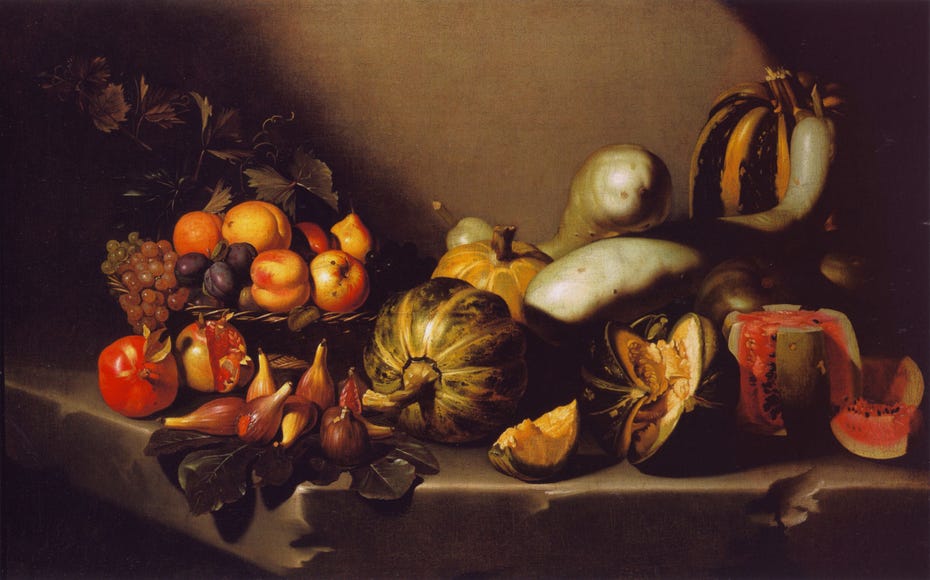
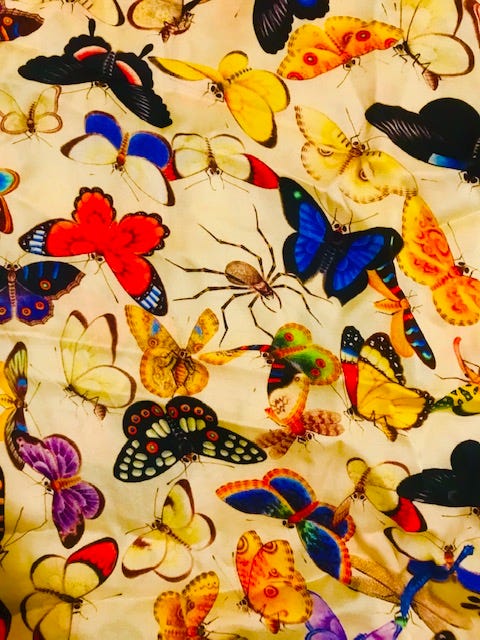
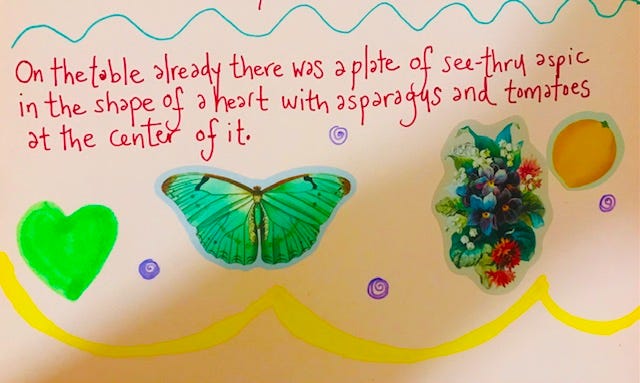
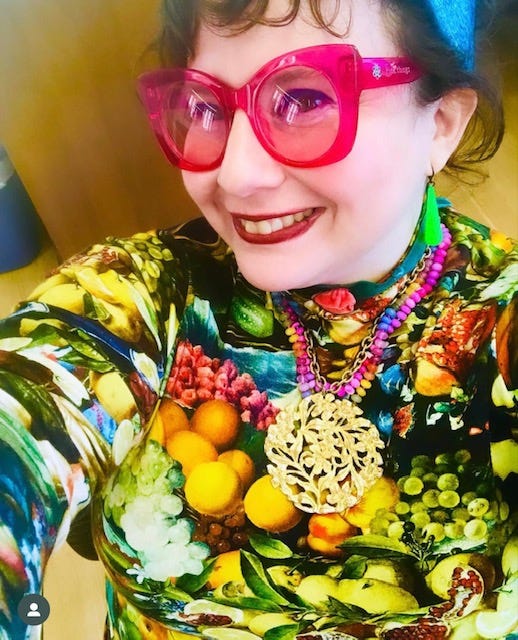
I love this, as a textile designer who’s made a few of these myself it’s so interesting to read the connections it strikes in another. I never would have related it to Caravaggio! 🧡